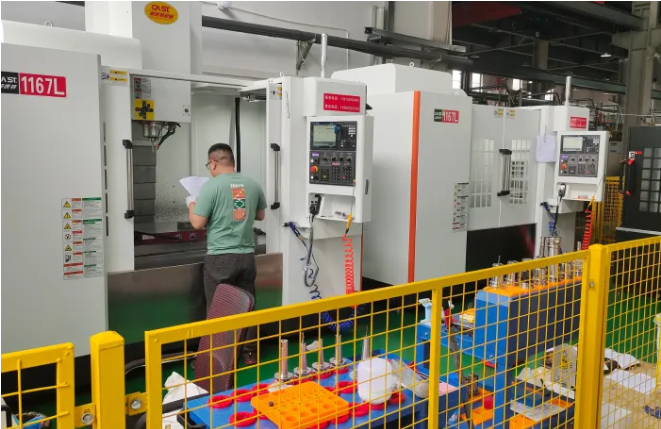Material Efficiency in Custom Injection Molding
Reducing Waste Through Precision Material Usage
Even more important though is the accuracy of material selection, and to this end, the reduction of wastage is the goal in custom injection moulding. Through careful selection of materials, we can make sure that only the required amount of materials are consumed and nothing more. Methods such as perfected designs and precise estimates of necessary material volume are enabling this efficiency. For instance, high-definition molds that precisely fit material measurements can reduce waste dramatically. A custom injection molding project realized a 30% decrease in scrap by implementing advanced design methods in one of the more significant applications. This is an example of how precision and cutting strategy can bring about significant waste reduction in production.
Optimized Resin Consumption for Cost Savings
Reducing resin usage is essential to lowering manufacturing costs in custom injection molding. Saving resin is not only cost effective, it’s eco-friendly, so it’s a natural for companies that look to do right by the environment. According to reports, by a variety of customers, resin optimization techniques have saved industry up to 20% on material cost which in relation to the overall cost of molding makes a major contribution. This way of business not only benefits to finance but also shows conscientious reduction of impact on environment by saving the material. The concept of optimized resin utilization speaks to the business looking to conserve resin in the pursuit of sustainable production practices, for both cost-savings and environmental reasons.
Design Optimization to Minimize Production Costs
Iterative Prototyping for Error-Free Manufacturing
Iterative prototyping is critical for minimizing manufacturing errors as it enables the perfecting of design before scaling into full production. It consists of repetitively building and testing revised versions of early prototypes in order to find and fix design flaws, and involves rapid iteration between engineering teams and users. By identifying mistakes at these early stages, businesses can save themselves the costlier errors when products are produced en masse. Evidence-based studies demonstrate that the use of iterative prototyping can decrease the defects by 30%, proving the effectiveness to improve the production efficiency. So spending time on a comprehensive prototyping is a great opportunity to save a lot, if not millions of both time and money.
Simulation Tools for Defect Prevention
Defect prevention is an important task in custom injection molding and simulation tools are key in achieving this. These tools provide a window on possible problems before actual production starts. Examples of simulation tools are Moldflow and CAD simulations which are capable of predicting the material flow, and identify the design deficiency. shootingscriptProbably the best resource to give you an instant look at how your production will be edited is shooting script, and Forrester.R made it happen 93 An accurate glance of what is to come can save massive amounts of time andmoney on post-editing corrections. And high-profile industry experts underline their significance when they state: "These simulations are able to improve design certainty and eliminate defects. By utilising simulation methods, it also maximises the cost savings of the design for manufacture pathway.
High-Quality Tooling for Long-Term Savings
Durable Mold Construction to Avoid Replacement Costs
The choice of a strong and lasting mold structure can also has a large effect on the total cost of the life of a product. Mold lifetime is not only relevant according to the number of parts produced, it is also associated with how frequently mold will have to be replaced or repaired which entails expenses and stoppages. For instance, higher grade materials like hardened steel or aluminum generally mean longer mold life, which leads to fewer replacements and less downtime. Industrial reports data, reported for hardened steel molds have durability up to 1 million cycles, molds with lower durability need to be replaced at a few hundred thousand cycles, demonstrating the cost saving potential. In the long-run, this durability translates to reduced cost over time and a sturdy basis for economical manufacturing.
Cycle Time Reduction Through Precision Engineering
The more accurate you can manufacture your tool, the shorter your injection times will be – this is an excellent way to improve your cycle time efficiency with high-volume production. Cycle Time Reduction: Shortening cycle times helps manufacturers to increase throughput and quickly satisfy customer needs. Comparisons between traditional and precise cycle times demonstrate the ability of precise engineering to reduce cycle time by as much as 30%, greatly enhancing manufacturing efficiencies. Customizing molding operations to fit customer requirements is important for businesses to focus on, all without sacrificing quality or efficiency. Relatively reduced cycle times are met by the implementation of advanced technology e.g. precision gating systems, optimized cooling processes and emphasize the role of precision engineering within EHS manufacturing technology.
Reducing Downtime and Maintenance Expenses
Predictive Maintenance Strategies
Predictive maintenance allows you to radically reduce equipment downtime, keeping everything running like clockwork. These solutions apply IoT sensors and AI models to the real-time monitoring systems of machinery, predicting possible future failure in advance. One study by International Journal of Production Research reports a 30% decrease in downtime-related costs by implementing predictive maintenance, which translates into significant operational cost savings. However, for businesses competing in the custom injection molding industry, investing in the proactive maintenance of their equipment allows them to keep their production schedule steady and their bottom line in the positive, reducing unexpected disruptions while increasing productivity.
Error Reduction in High-Volume Runs
The key for production efficiency and economic viability is to minimise errors in the high volume production runs. Typical errors, such as misalignment of the mold or irregular material, not only interfere with operation, but also result in a huge waste of material and time. Methods to reduce these errors include calibration maintenance, automatic quality checks, and specific training programs. By utilizing these strategies, errors are not only minimized but also the possible impact of such errors, which is demonstrated in a case study by the Journal of Manufacturing Systems, where a 25 percent increase in production yield was recorded due to specific error reduction measures. Industries operating within the custom injection molding markey work as efficiently as possible to eliminate these down times and truly maximize the cost efficiency of all production operations.
Scalability Advantages of Custom Molding
Flexible Volume Adjustments Without Retooling
One benefit of custom injection molding is the flexibility of varying volumes without significant retooling. This flexibility enables companies to quickly adjust production rates to market requirements, thereby reaping substantial cost reduction and lead time benefits. For example, firms can do a way with the economic and temporal charge, which usually implies the remodeling of equipment in relation to every cycle (changing the production volume). But the flexibility of custom molding allows you to scale production efficiently, with very little (if any) waste on smaller or larger orders. The ones who have found success with this scaling are automotive or CE companies, where market demand varies widely.
Long-Term ROI Through Repeatable Processes
The ROI of custom injection molding while investing in custom injection molding can save a company an enormous sum of money over a period of years due to repeated processes. These operations assure a uniform product quality and a minimum of defects, resulting in a greater efficiency and less waste. Looking at the math, companies utilising custom moulding can yield a better return due to reduced material costs, decreased margin of error, and little to no post-production changes. For example, companies that utilize this technology again and again have demonstrated greater profitability as a result of consistent business operations. Case studies showcase companies such as Abtec Inc. that enjoyed impressive long-term benefits by adopting custom molding. By integrating strategically, they´ve lowered maintenance costs and improved operations on their supply chain, demonstrating the value of repeatable processes.
FAQ Section
How Does Custom Injection Molding Help Reduce Production Costs?
Custom injection molding reduces production costs through precision material usage, optimized resin consumption, and efficient design prototyping. Techniques such as simulation tools, durable mold constructions, and predictive maintenance strategies further cut costs by improving quality and minimizing downtime.
What Are the Benefits of Optimized Resin Consumption?
Optimized resin consumption reduces material costs and aligns with environmental sustainability goals. It improves cost efficiency while demonstrating a commitment to eco-friendly manufacturing practices.
Why Is Iterative Prototyping Important in Manufacturing?
Iterative prototyping is crucial as it allows for the early identification of design flaws, preventing costly errors in mass production, and significantly reduces manufacturing defects.
Can Simulation Tools Help in Reducing Manufacturing Defects?
Yes, simulation tools provide insights into potential design issues before production, allowing adjustments to be made to avoid defects and save time and cost in manufacturing.
What Role Does Predictive Maintenance Play in Reducing Downtime?
Predictive maintenance reduces downtime by using advanced technologies to monitor machinery health in real-time, predicting failures before they occur, leading to enhanced productivity and operational efficiency.
Table of Contents
- Material Efficiency in Custom Injection Molding
- Design Optimization to Minimize Production Costs
- High-Quality Tooling for Long-Term Savings
- Reducing Downtime and Maintenance Expenses
- Scalability Advantages of Custom Molding
-
FAQ Section
- How Does Custom Injection Molding Help Reduce Production Costs?
- What Are the Benefits of Optimized Resin Consumption?
- Why Is Iterative Prototyping Important in Manufacturing?
- Can Simulation Tools Help in Reducing Manufacturing Defects?
- What Role Does Predictive Maintenance Play in Reducing Downtime?

